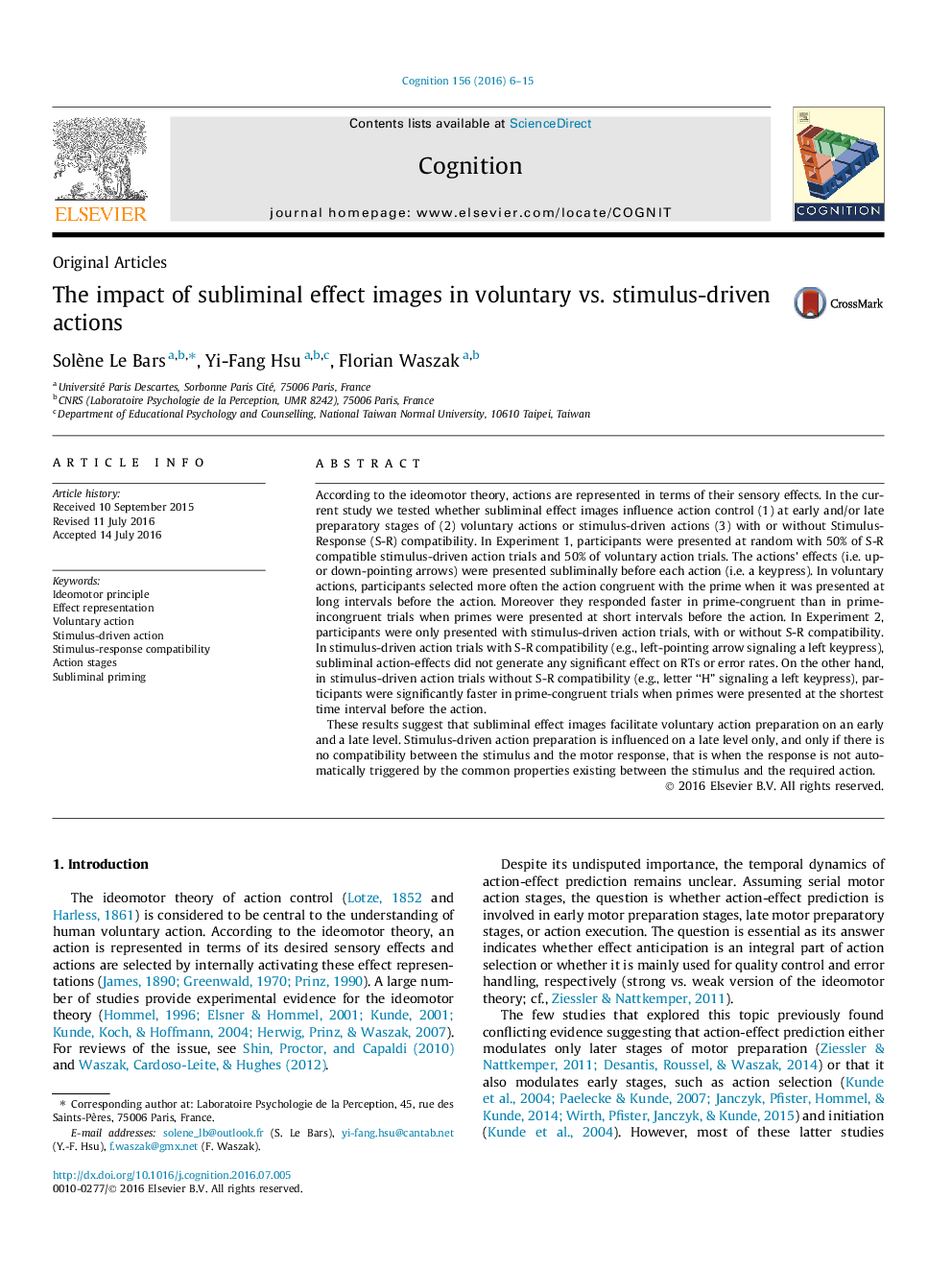| Article ID | Journal | Published Year | Pages | File Type |
|---|---|---|---|---|
| 926311 | Cognition | 2016 | 10 Pages |
•Subliminal primes representing visual action effects influence action control.•Involvement of action-outcome anticipation depends on the kind of action.•Action-outcome anticipation is involved in both early and late stages of voluntary action preparation.•Involvement of action-outcome anticipation depends on S-R compatibility in stimulus-driven actions.•Action-outcome anticipation is involved in late stages of stimulus-driven actions without S-R compatibility.
According to the ideomotor theory, actions are represented in terms of their sensory effects. In the current study we tested whether subliminal effect images influence action control (1) at early and/or late preparatory stages of (2) voluntary actions or stimulus-driven actions (3) with or without Stimulus-Response (S-R) compatibility. In Experiment 1, participants were presented at random with 50% of S-R compatible stimulus-driven action trials and 50% of voluntary action trials. The actions’ effects (i.e. up- or down-pointing arrows) were presented subliminally before each action (i.e. a keypress). In voluntary actions, participants selected more often the action congruent with the prime when it was presented at long intervals before the action. Moreover they responded faster in prime-congruent than in prime-incongruent trials when primes were presented at short intervals before the action. In Experiment 2, participants were only presented with stimulus-driven action trials, with or without S-R compatibility. In stimulus-driven action trials with S-R compatibility (e.g., left-pointing arrow signaling a left keypress), subliminal action-effects did not generate any significant effect on RTs or error rates. On the other hand, in stimulus-driven action trials without S-R compatibility (e.g., letter “H” signaling a left keypress), participants were significantly faster in prime-congruent trials when primes were presented at the shortest time interval before the action.These results suggest that subliminal effect images facilitate voluntary action preparation on an early and a late level. Stimulus-driven action preparation is influenced on a late level only, and only if there is no compatibility between the stimulus and the motor response, that is when the response is not automatically triggered by the common properties existing between the stimulus and the required action.
